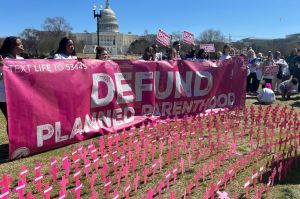Survey: Teen Sex Figures Drop
The percentage of high school students reporting ever having sexual intercourse has declined during the past 15 years, according to a new report released by the CDC.
WASHINGTON – The percentage of high school students reporting ever having sexual intercourse has declined during the past 15 years, according to a new report released by the Centers for Disease Control and Prevention (CDC) on Thursday.
The 2005 National Youth Risk Behavior Survey (YRBS) reported that 47 percent of high school students last year said they had ever had sexual intercourse, roughly the same as in the 2003 National YRBS, but down from 54 percent reporting ever having sexual intercourse in the National YRBS survey in 1991. Other improvements seen during the past 15 years includes a decline in the percentage of high school students reporting current alcohol use – 43 percent in 2005 vs. 51 percent in 1991.
"The overall survey results are encouraging because they show us that persistent efforts to get young people to adopt healthier behaviors can achieve positive results," said Howell Wechsler, Ed.D, MPH, director of CDC's division of adolescent and school health, in a news release.
Data from the 2002 National Survey of Family Growth conducted by the National Center for Health Statistics (NCHS) similarly revealed that the percentage of teenagers who had sexual intercourse has declined in recent years, according to Concerned Women for America (CWA). The decline, the group noted, is most noticeable among male teenagers between the ages of 15 and 19, who experienced a decline of 23 percent from 1988 to 2002.
“This official data should silence those critics who have been denying the positive trends in teen abstinence and questioning the effectiveness of abstinence programs,” commented Dr. Janice Shaw Crouse, who has written extensively on teen sexual behavior and consequences for CWA.
“We are so happy to see the widespread dissemination of this data,” she said in a released statement, referring to the latest NCHS survey.
The June issue of Child Trends’ “Research Brief” also noted that the rates of teenage pregnancy and childbearing have been declining in the United States for all racial and/or ethnic groups, for older and younger teenagers, and also for teenagers in every state. However, the research indicated a slowing of the decline of U.S. teen birth rates, which has resulted in an increase in the total number of births to teenagers.
Child Trends also found that adolescents who delay their first sexual experience are less likely to regret the timing of their first sexual experience, have fewer sexual partners, and are less likely to be involved in a coercive sexual relationship.
“Teens who engage in promiscuous sexual relations are at a greater risk of contracting sexually transmitted diseases and unwanted pregnancies,” commented CWA’s Crouse.
“We must keep sending the simple message: what works in delaying teen sexual activity and preventing promiscuity is parental involvement, good friends, strong faith, and participation in church activities.”
Nearly 14,000 U.S. high school students participated in the 2005 National YRBS. The newly released report includes national data as well as data from surveys conducted in 40 states and 21 large urban school districts.





























